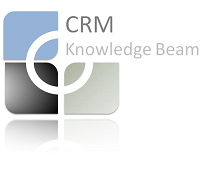LES GRERY commented on David Hum's exposition over the difference between deductive reasoning and inductive reasoning. Les wrote: “His work showed that, whilst we all have an unswerving belief in conclusions from the latter, we were being irrational, particularly where conclusions about natural phenomena were drawn.”
This is not new stuff! In a special issue of Organization Science journal in 1999, we’ve been introduced to the Complexity Science in the field of management literature. Complexity Science describes the NON LINEAR DYNAMICS behind customer behavior, behavior of markets, societies, firms & so on.
Weeks later, I read Gartner’s predictions for 2010 deduced from thousands of daily client interactions. IT and S/W business are essentially non linear in nature, because it includes human society and human beings who don’t exactly behave in a rational manner as the economist would have us believe.
Does Gartner understand NON LINEAR DYNAMICS?
Hats off to Mike Harris and Simon Hayward for compiling this list:
---------------
By 2012, 20% of businesses will own no IT assets.
By 2012, India-centric IT services companies will represent 20% of the leading cloud aggregators in the market (through cloud service offerings).
By 2012, Facebook will become the hub for social network integration and Web socialization.
By 2014, most IT business cases will include carbon remediation costs.
In 2012, 60% of a new PC's total life greenhouse gas emissions will have occurred before the user first turns the machine on.
Internet marketing will be regulated by 2015, controlling more than $250 billion in Internet marketing spending worldwide.
By 2014, over 3 billion of the world's adult population will be able to transact electronically via mobile or Internet technology.
By 2015, context will be as influential to mobile consumer services and relationships as search engines are to the Web.
By 2013, mobile phones will overtake PCs as the most common Web access device worldwide
By 2013, 50% of banks will still lack a formal innovation program and budget, severely restricting growth potential.
By 2012, up to one in five government processes will rely on "crowdsourced" data.
By 2015, local education agencies will cut school construction 50% by using virtual learning environments to better utilize existing facilities.
Driven by sustainability initiatives, by 2014, electricity prices will have risen by an average of 30% in real terms across OECD countries.
By year-end 2011, manufacturers that prioritize future software investments in “Operational Technology”, instead of traditional IT and ERP, will achieve a 10-times better return on their investment.
By 2015, despite the relaxation of Stark laws and the American Recovery and Reinvestment Act (ARRA) incentives, less than 15% of small U.S. physician practices will have implemented an electronic health record.
By 2012, U.S. health reform will cause 20% of health insurers to perish.
By 2013, Apple's iTunes store will be earning more from publishing (books, newspapers and magazines) than from any other content category.
By 2012, over 40% of Tier 1 retailers will pursue m-commerce. However, only 20% will be successful in effectively integrating these initiatives to enable cross-channel shopping.

No comments:
Post a Comment